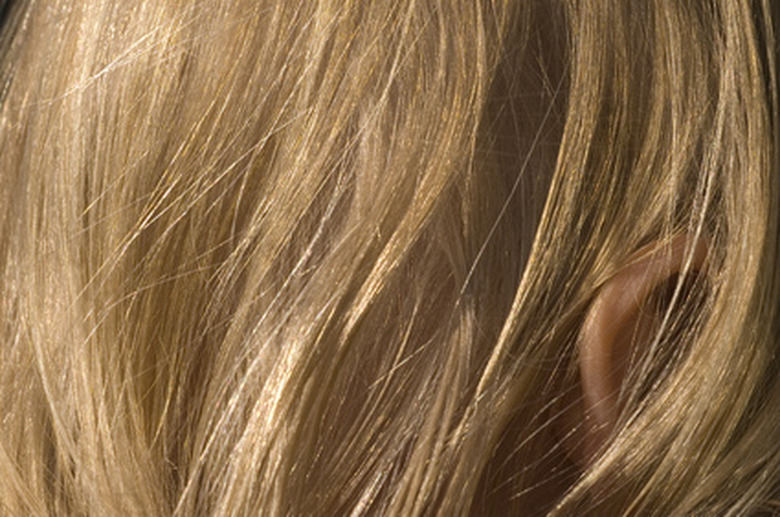Science Projects On Hair Dye
If you need an exciting idea for your science fair project, look no further than your beautiful locks of hair. The effects of hair dye on hair and how dye interacts with water are not only interesting questions but also can be part of a project that is easy to set up. To run a few basic experiments, all you'll need is water, hair dye and sample hair.
Dye and Hair Strength
Dye and Hair Strength
One of the most popular science fair projects involving dye is to test the effects of hair dye on on hair strength. The setup for this project is simple. First, conduct a series of strength tests on hair that has not been dyed and record the results. Next, dye the hair using any color dye and brand name. Dry off the hair when the dying process is complete, and then conduct the same series of strength tests. Record the results and make note of any differences. Did the hair become weaker? Is the hair stronger? Is there no difference at all? Display the results and draw your conclusion.
Dye and Water Hardness
Dye and Water Hardness
Water hardness is a description of how many minerals exist in the water. Water becomes "harder" as the amount of present minerals increases. Conduct a project to see if water hardness effects how long it takes for hair to dye. Begin by having at least two different test samples, each one with different water. You can use tap water for one sample and bottled water for the second sample (the tap water will be harder). Dye a sample of hair from the same person or source in each type of water and record the results. Did the water change the dye's effectiveness? Does the dying time need to be increased if you have hard water? Use these questions to formulate a conclusion.
Natural Hair Color and Dying Time
Natural Hair Color and Dying Time
Does your natural hair color affect how long it takes to dye your hair? For example, if the desired result is black hair, would blond hair require a longer processing time than brunette hair? Use two different hair samples for this project. Each one needs to be a different color. Dye each hair sample black for the same amount of time and with the same brand. Dry off hair samples, and see if they have been completely dyed. Use the results to make a conclusion.
Shampoo and Hair Dye
Shampoo and Hair Dye
This experiment will test the effects of different shampoo brands on hair dye. You'll need to conduct most of the work before time for this project. First, have a hair sample for every shampoo you are going to test. For example, if you are going to test three shampoos, have three different hair samples. Each sample should come from the same source to ensure uniformity of the hair quality and the dye used. Next, wash each hair sample multiple times until you start to notice the dye color fading. Record your results and present them to your peers while also displaying how you conducted the project (i.e., display the shampoo and show how many times you had to wash the hair before fading occurred). Your conclusion should involve the different ingredients used in the shampoos and how you think they affected the outcome.
Cite This Article
MLA
Montoya, David. "Science Projects On Hair Dye" sciencing.com, https://www.sciencing.com/science-projects-hair-dye-6889848/. 24 April 2017.
APA
Montoya, David. (2017, April 24). Science Projects On Hair Dye. sciencing.com. Retrieved from https://www.sciencing.com/science-projects-hair-dye-6889848/
Chicago
Montoya, David. Science Projects On Hair Dye last modified August 30, 2022. https://www.sciencing.com/science-projects-hair-dye-6889848/
